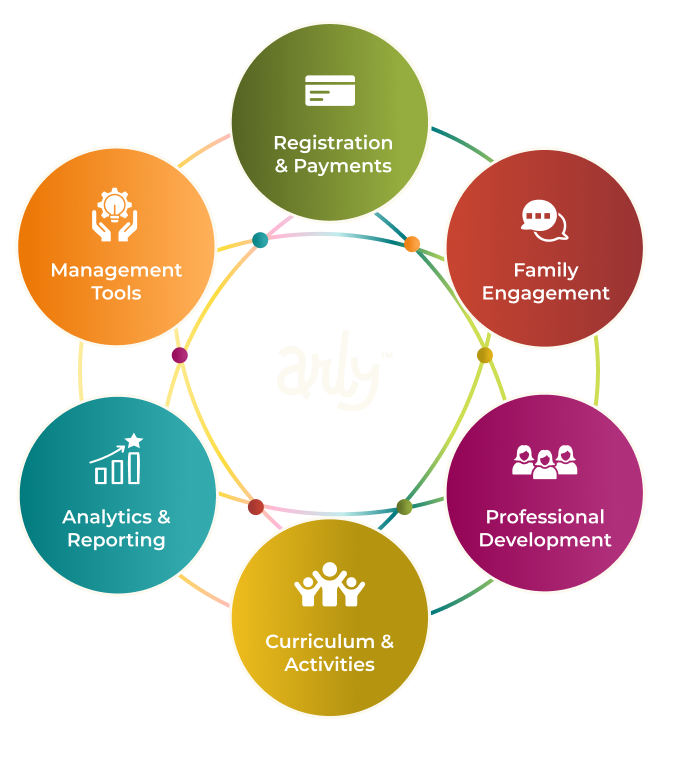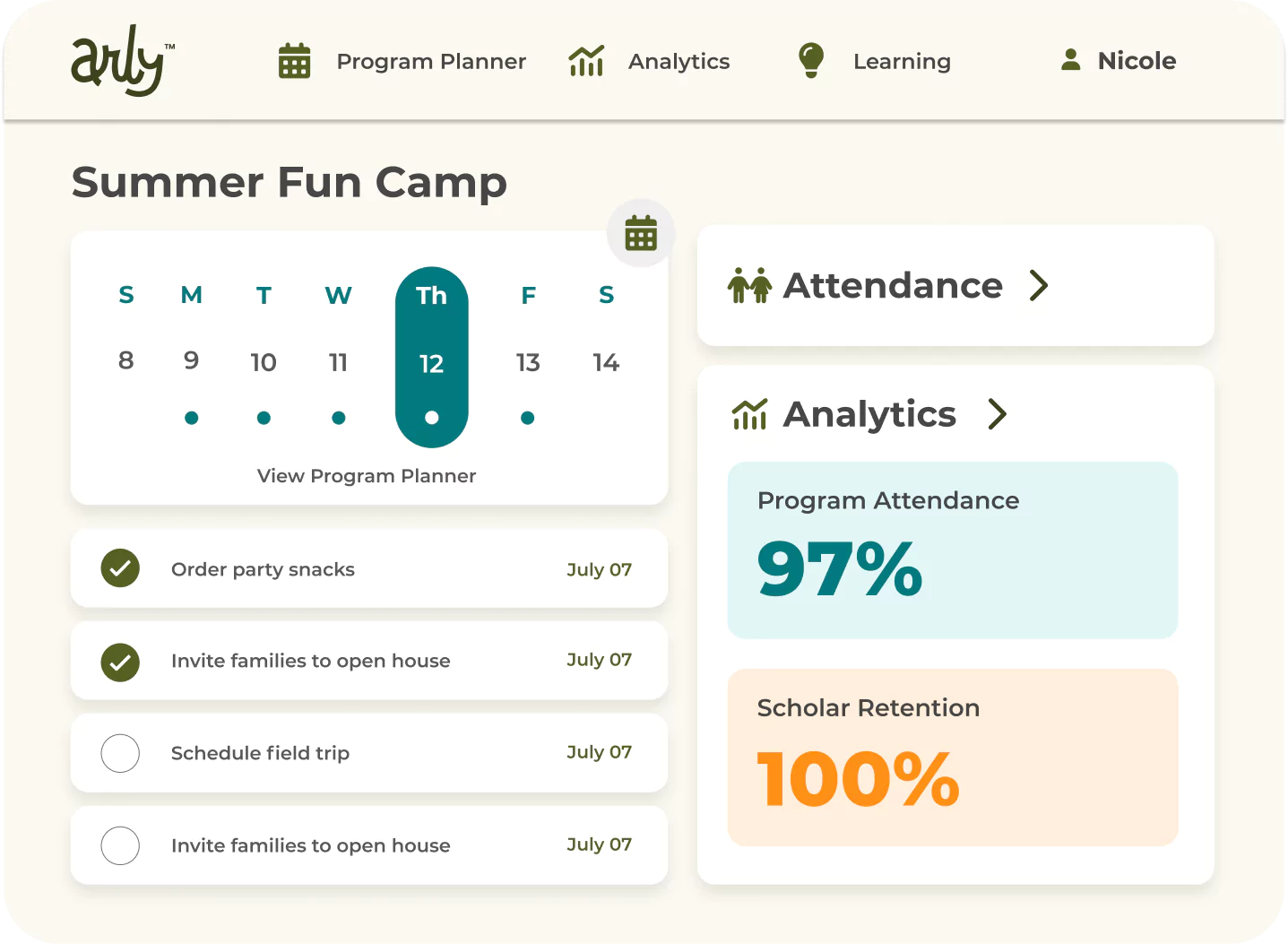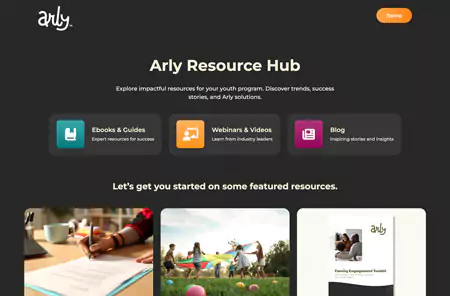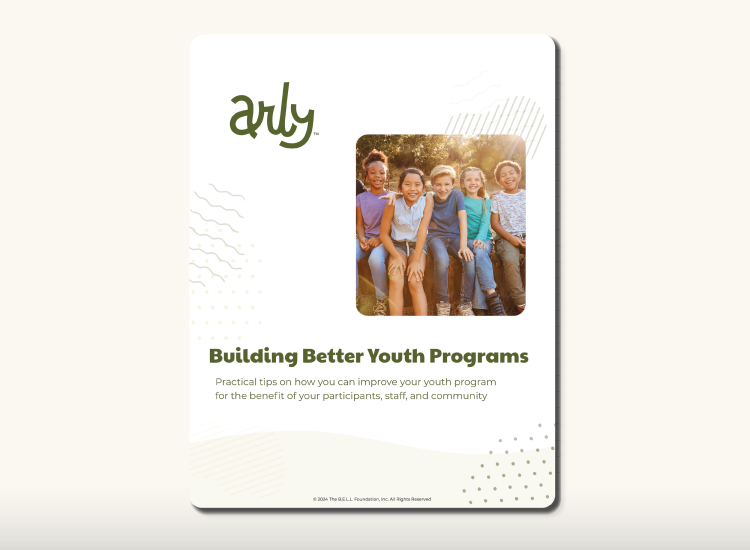Maximize Grants & Prove Impact with Better Reporting
By Arly Communications on April 24, 2025
In the competitive world of grant funding, youth programs are often tasked with securing financial support to continue their important work. However, securing grants is no easy feat, and it requires more than just a compelling program idea. Funders want to see measurable results, clear accountability, and tangible impact. This is where effective measurement and reporting become critical tools in proving a program’s value.
Why Measurement and Reporting Matter
1. Demonstrating Impact to Funders
One of the most powerful ways to secure funding is by demonstrating your program’s impact. Grantors are increasingly looking for data and evidence that their investment will lead to strong outcomes. Good measurement allows you to identify the results that are most important for your program—whether it’s improved academic performance, enhanced social skills, or increased youth engagement. Youth programs that can showcase their effectiveness through clear data are in a stronger position to secure funding.
2. Storytelling through Data
Stories are powerful tools for creating connections. While anecdotal stories of success are essential, they can be even more impactful when backed up by data. When you can show how your youth program’s results align with the goals of funders, you are not just asking for money—you’re telling a compelling story about how your program is helping young people thrive.
Well-reported data can help weave together individual stories to create a bigger narrative about the change your program is fostering. For example, if your youth program is focused on academic achievement, showing how participants’ grades improved, or how many stayed in school because of your intervention, can tell a powerful story of success.
3. Providing Accountability
In addition to demonstrating the impact of your program, good reporting ensures accountability. Funders need to know how their money is being spent and whether it is contributing to the intended outcomes. By providing clear, detailed reports on program activities, expenses, and results, you can build trust with your funders and reinforce the idea that you are using their support wisely.
When you follow through on the goals you set, funders are more likely to invest in your program again in the future. Consistent and transparent reporting not only helps you maintain funder trust but also provides an opportunity to reflect on your program’s successes and challenges.
How to Improve Measurement and Reporting in Youth Programs
Let’s dive into some strategies that can help improve your measurement and reporting practices.
1. Establish Clear and Relevant Metrics
Before you can measure impact, you need to define what success looks like for your program. What specific outcomes are you trying to achieve? Are you aiming to increase reading levels, improve life skills, or foster leadership qualities?
Once you know what success looks like, create measurable metrics to track progress, consider SMART goals.
SMART goals are objectives that are:- Specific
- Measurable
- Achievable
- Relevant
- Timely
These goals could include:
- Academic achievements (test scores, reading fluency, etc.)
- Behavioral changes (reduction in truancy, improvement in social skills)
- Participation levels (attendance rates, involvement in extracurricular activities)
- Feedback from participants (surveys, interviews, etc.)
Using a mix of quantitative (numbers) and qualitative (personal stories, testimonials) data will give a comprehensive view of your program’s impact.
2. Use Tools for Data Collection
Leverage technology to help streamline data collection and reporting. There are numerous software tools available that can simplify data management, such as:
- Survey tools, which allow you to gather feedback and track program results from participants.
- Program management tools, which provide solutions for tracking activities, outcomes, and evaluations.
- Data visualization tools, which can help turn complex data into easy-to-understand reports for funders.
Consider implementing an affordable, complete program management technology like Arly that helps youth programs save time and money by combining all of these tools into one single platform.
4. Highlight Successes and Challenges
While it’s important to showcase the successes of your youth program, don’t shy away from reporting on the challenges you face. Funders appreciate honesty and transparency. By discussing the obstacles your program has overcome or is working to address, you can demonstrate resilience and the capacity for improvement.
For example, if a program is facing difficulties with student retention, acknowledging this challenge and outlining the steps you're taking to address it will not only strengthen your relationship with funders but also build their confidence in your ability to adapt and succeed.
5. Use Testimonials and Personal Stories
Incorporating personal stories from the youth in your program can humanize your data and make your impact more relatable. Testimonials from participants, parents, and community members provide an emotional connection and show the real-world benefits of your work. These stories can be woven into your reports to provide context to the numbers.
For example, sharing a story of a student who overcame personal challenges to succeed academically with the support of your program adds depth to your data. It’s not just about statistics—it’s about the people behind those numbers.
Measure more than their smiles with Arly
Better reporting is about more than just filling out forms or checking boxes for funders. It’s a vital tool that can help youth programs demonstrate their effectiveness, build credibility, and ultimately secure funding.
At Arly, we are about more than software – we care about the impact your program is making in the lives of your participants. With Arly’s measurement and reporting tools, we help youth programs track key data, amplify success, and utilize feedback to gain insight into their experiences and inform future programming decisions.
Arly is built upon what the evidence proves it takes to get great results, learn more by requesting a free demo today!






%20(76).png)

%20(49).png)

